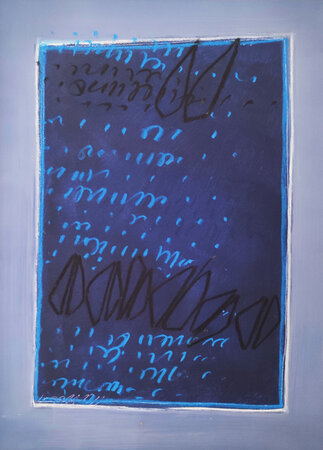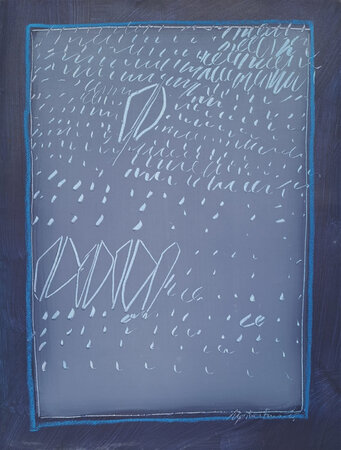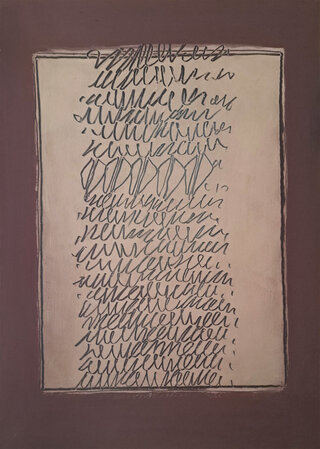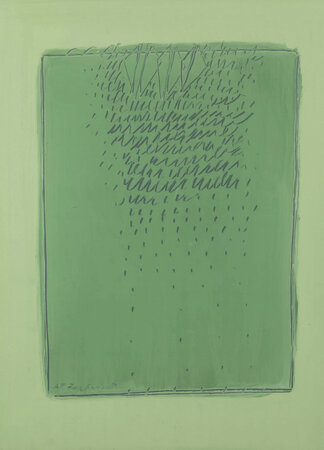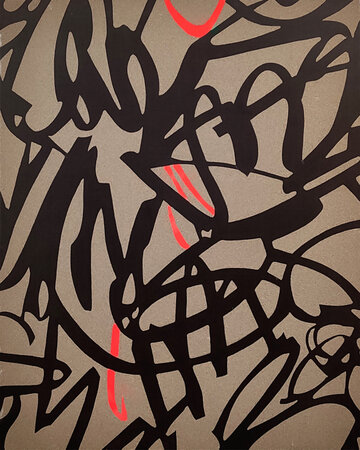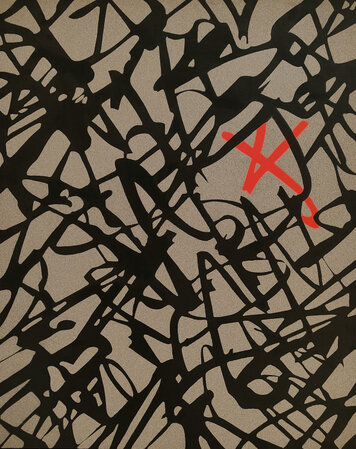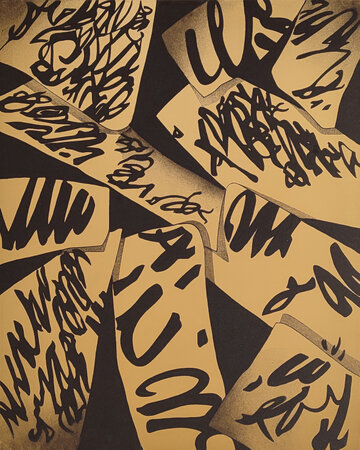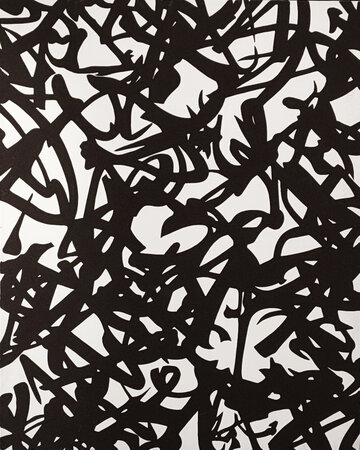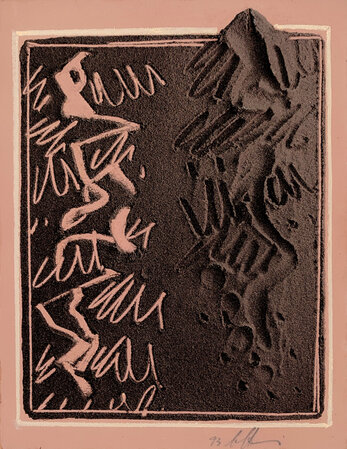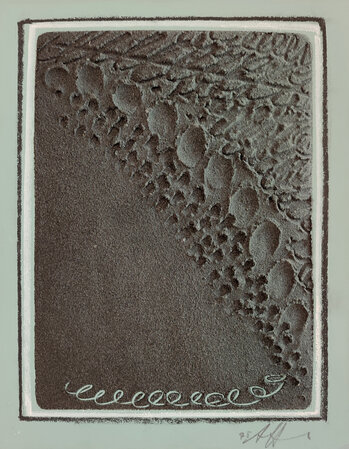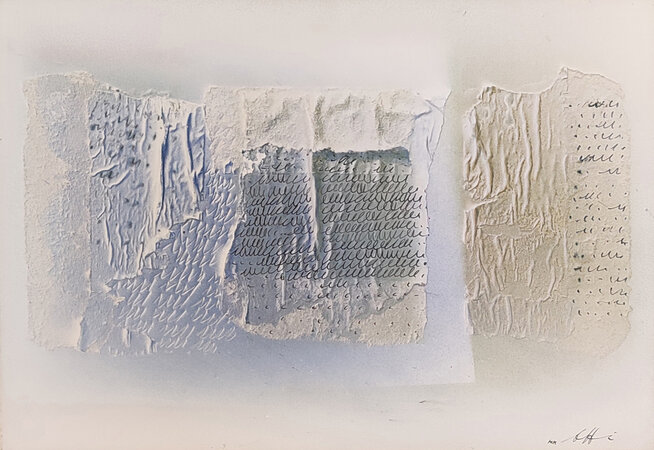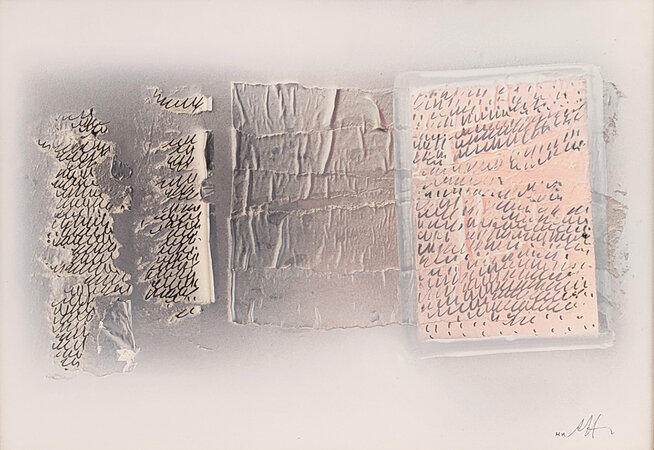AGOSTINO FERRARI
Agostino Ferrari was born in Milan on November 9, 1938. He had his first solo exhibition in 1961 at the Pater Gallery, presented by Giorgio Kaisserlian. His artistic development took a significant turn through his long association with Lucio Fontana. Although Ferrari didn't fully embrace "Spatialism," the influence of Fontana led Ferrari to develop a deeply philosophical approach to art, which has remained a constant in his work, even through moments of experimentation and reflection. In 1962, thanks to the critical insight of Alberto Lucia, Ferrari co-founded the "Gruppo del Cenobio" alongside artists Arturo Vermi, Angelo Verga, Ettore Sordini, and Ugo La Pietra. The group aimed to reinterpret painting, transforming it into pure, primal gesture while also looking toward the future. They focused on creating a true "poetics of the sign," where painting was reduced to graphic strokes, and composition involved overlapping archetypal forms. Though short-lived, the group made a significant impact on Milan's dynamic art scene at the time, and it marked the beginning of Ferrari’s ongoing exploration of the sign as the central element of his work. After the group dissolved, Ferrari continued to develop the sign as a form of non-signifying writing. Between 1964 and 1965, Ferrari lived in New York, where he met artists like Lichtenstein, Rauschenberg, Jasper Johns, and Billy Apple. While his artistic vision differed from that of his American contemporaries, the experience influenced his use of the sign, which began to take on a more plastic form, paralleling the work of friends like Agostino Bonalumi, Enrico Castellani, and especially Dadamaino. In 1966, Ferrari exhibited at the Eve Gallery in New York. After returning to Italy, Ferrari focused on object-based and process-driven works that explored the core elements of painting—sign, form, and color. These became "staged" compositions with a "fundamentally plastic" nature, as noted by Lucio Fontana in 1967, when he presented Ferrari’s solo exhibition. Later, Ferrari went through a period of rethinking, which he described as a "refoundation," leading him to adopt a more gestural approach to the sign. This style, featuring illegible modules and varied textures, often enriched with sand, became a constant feature of his work in cycles that spanned decades, such as the "Eventi," "Palinsesti," and "Maternità" series. In these, a central motif was repeated in the outer parts of the canvas, often with inverted tonalities. More recent works, like "Oltre la soglia" and "Interno-esterno," include a black tear in the painting, where the sign either emerges from or sinks into the blackness, symbolizing a connection with the positive force of light. In 1978, after a stay in Dallas, Ferrari held an exhibition at the Contemporary Art Gallery. It was during this time that he began incorporating volcanic sand into his work, a defining feature that remains a hallmark of his artistic practice. Along with his early exhibitions with the “Gruppo del Cenobio,” Ferrari participated in major exhibitions on abstract art, including the 2005 XIV Quadriennale of Rome.
Ferrari has exhibited in numerous solo and group exhibitions in Italy and abroad. Notable retrospectives include shows at the Palazzo dei Diamanti in Ferrara (1976), Palazzo Braschi in Rome (1992), Casa del Mantegna in Mantua (2010), the Fundación Frax in Alicante, Spain (2011), and Palazzo Lombardia (2013). In 2007, he created permanent public works in Piazza Borgoverde, Vimodrone, commissioned by the Land (Landscape Architecture) group of Milan. In 2014, he participated in the major collective exhibition "Nati nel ’30. Milano e la generazione di Piero Manzoni" at the Palazzo della Permanente in Milan. Ferrari has worked with leading galleries like Franz Paludetto (Turin), Lorenzelli (Milan), Centro Steccata (Parma), and Thomas Levy (Hamburg). His works are part of important museums and private collections around the world. In 2018, the Museo del Novecento in Milan hosted a major retrospective of his work, titled "Segno. Espressione. Linguaggio," curated by Martina Corgnati.Agostino Ferrari lives and works in Milan.
The general catalog of Agostino Ferrari’s work, curated by Martina Corgnati and published by Electa, documents over 2,500 pieces, excluding multiples and projects, along with critical texts and bio-bibliographical references.
→ 01 SENZA TITOLO, early 1960s,mixed technique on canvas paper, cm 68x50
→ 02 BREVE RACCONTO, 1963, mixed technique on canvas paper, cm 63x48
→ 03 BREVE RACCONTO, 1964, mixed technique on canvas paper, cm 70x50
→ 04 BREVE RACCONTO, 1964, mixed technique on canvas paper, cm 75,5x56
→ 05 SENZA TITOLO, 1965, mixed technique on canvas paper, cm 66x49,5
→ 06 SENZA TITOLO, 1989, mixed technique and sand on cardboard, cm 65x50
→ 07 N.E.S.O., 1994, acrylic and sand on canvas, cm 100x80
→ 05 N.E.S.O., 1993, acrylic and sand on canvas, cm 100x80
→ 06 FRAMMENTI., 1997, acrylic and sand on canvas cm 100x80
→ 07 N.E.S.O., 1999, acrylic and sand on canvas, cm 100x80
→ 08 SENZA TITOLO (SEGNO-IMPRONTA), 1993, acrylic and sand on canvas, cm 32,5x25
→ 09 SENZA TITOLO (SEGNO-IMPRONTA), 1995, acrylic and sand on canvas, cm 32,5x25
→ 10 MEMORIE, 2000, acrylic and sand on canvas, cm 35x50
→ 11 MEMORIE, 2000, acrylic and sand on canvas, cm 35x50


